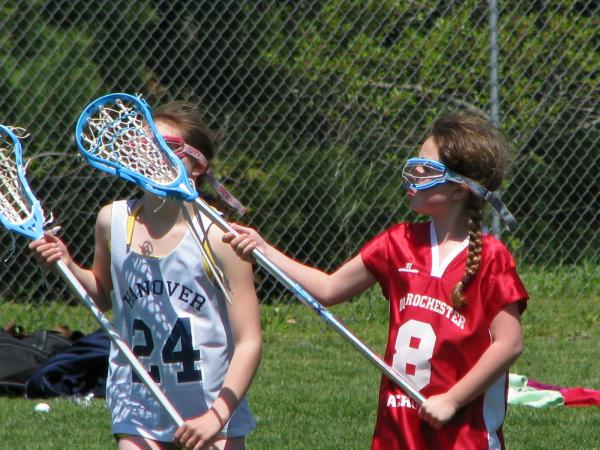Here are some important tips parents need to know about preventing eye injuries and first-aid for eye injuries if they occur.
First Aid
Specks in the eye
Sources: Prevent Blindness America and June 2011 edition of The At of Living Well/South Jersey magazine.
Revised November 9, 2011
Preventing eye injuries
- Always follow the rules and regulations of your child's sport regarding protective eyewear and equipment, whether it be during games or practices or playing in the backyard. For instance, boys' lacrosse requires helmets with face cages, while those playing girls' lacrosse must wear protective goggles/face shields
 .
. - Survey the playing field for any potential eye hazards (low hanging branches, short poles, sticks in ground, lawn furniture, sport equipment including goal frames, benches, etc.)
- Do not allow athletes to play with broken or hazardous equipment that could pose a potential danger for eye injury.
- Always ensure that athletes are supervised when playing sports with objects that could pose hazards (e.g. lacrosse sticks, ice and field hockey sticks, baseball bats, etc.)
- Always educate players regarding rules to prevent potential eye injuries. For example, most sports do not allow sticks or playing objects to come above the shoulders during play.
- Always be proactive and stock a first aid kit that includes a rigid eye-shield and eyewash for use if an injury occurs.
First Aid
Specks in the eye
- Do not rub the eye
- Try to let tears wash the object out or use eyewash
- Try lifting the upper eyelid outward and down over the lower eyelid.
- If the speck remains in the eye, cover the eye lightly and seek the attention of a physician
Direct blow to the eye or surrounding bone and soft tissue
- Apply a soft, cold compress to the area to assist in pain and swelling management.
- If eye and or surrounding facial soft tissue is painful, seek emergency care to assess for potential facial fractures, vision deficits, or internal eye damage.
- With any direct facial blow, it is always important not to overlook the potential for head injury, such as a concussion. It is important to discuss this potential associated injury with a doctor upon examination of the eye injury.
Cuts or puncture of the eye or eyelid
- Do not flush or wash the eye
- Do not remove the stuck object
- Do not attempt to move eye
- Cover eye with rigid eye-shield if object is not protruding out of eye
- Call 911 or seek emergency help right away
Sources: Prevent Blindness America and June 2011 edition of The At of Living Well/South Jersey magazine.
Revised November 9, 2011








